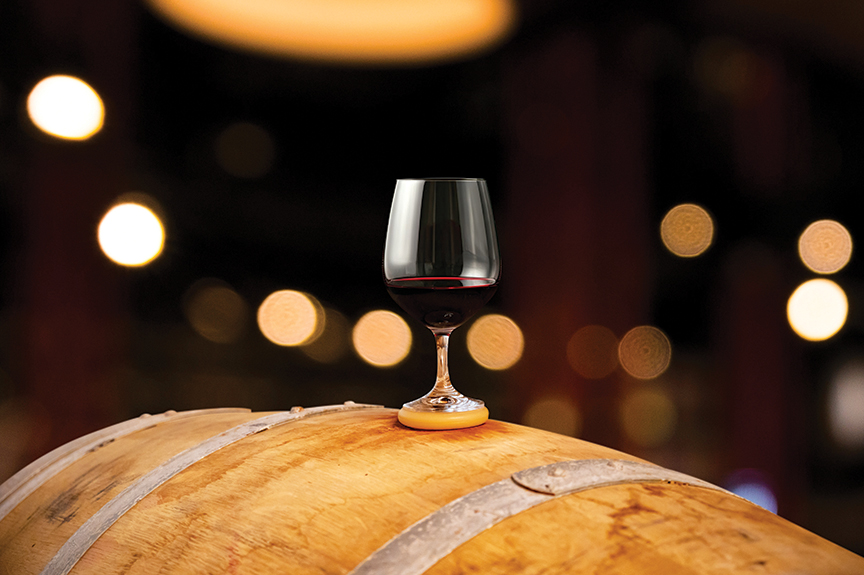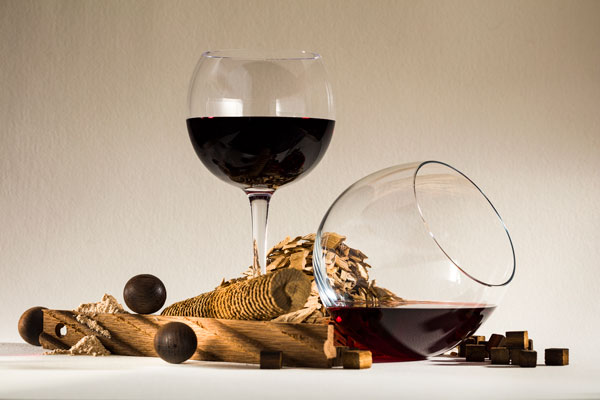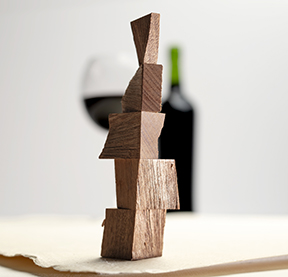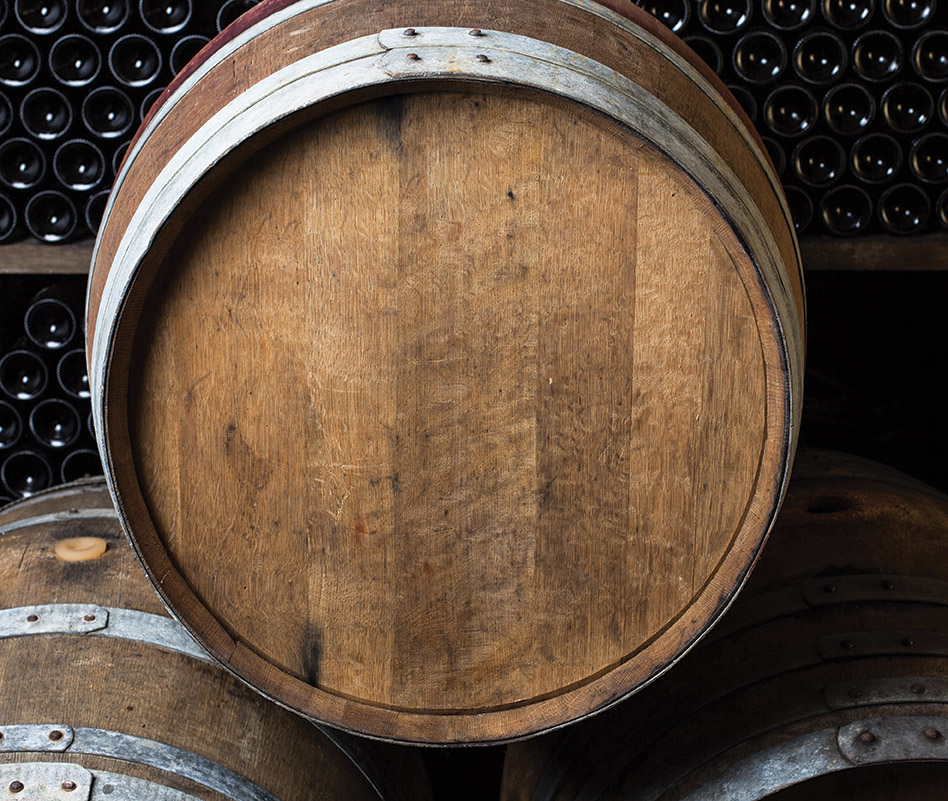Beyond the Barrel
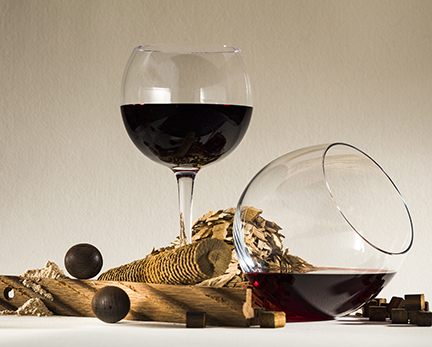 We have a love affair with the barrel. For thousands of years people have used barrels for a practical means of transferring and storing goods. Only within the last couple of centuries has their general use given way to lighter, less expensive, and more durable materials, leaving the remaining oak barrels for the beverage makers. Ask a home winemaker about the next big purchase they would like to make for their wine and many will put an oak barrel on the short list. It’s easy to see why, visit your local winery and there they are stacked high in neat rows, annotated for when memory fails. They are beautiful and beneficial to red wines and a select few white varieties. Who wouldn’t want to add an oak barrel to sit amongst their carboys?
We have a love affair with the barrel. For thousands of years people have used barrels for a practical means of transferring and storing goods. Only within the last couple of centuries has their general use given way to lighter, less expensive, and more durable materials, leaving the remaining oak barrels for the beverage makers. Ask a home winemaker about the next big purchase they would like to make for their wine and many will put an oak barrel on the short list. It’s easy to see why, visit your local winery and there they are stacked high in neat rows, annotated for when memory fails. They are beautiful and beneficial to red wines and a select few white varieties. Who wouldn’t want to add an oak barrel to sit amongst their carboys?
The interest in barrels has never been higher as the number of wineries, craft breweries, and distilleries reach all time highs year after year. With all the demand, prices are steadily increasing, making the cost of a new — or even used — barrel quite a pricy investment. Even the smaller sizes ideal for home winemakers are still a costly investment. In addition to the cost, another issue home winemakers may have with barrels is the space they take up. Even a 5- or 10-gallon (19- or 38-L) barrel can take up a considerable amount of space. Add to that, smaller barrels can have a tendency to leak more than their larger counterparts, and require more attention maintaining them if they are empty and time topping them up when filled. Most importantly, smaller oak barrels offer a surface area-to-volume ratio that far exceeds that of the 59-gallon (225-L) barrels the pros use. Oak character can become excessive if not monitored very closely, and oxygen ingress can ruin your wine before you know it (of course, this can be controlled with careful attention — read more about these risks in the “Small Barrels” feature in this issue.
If a barrel isn’t in your near future (or you have a barrel that has been used so much that it is no longer contributing much in the way of oak aroma and taste), the modern home winemaker fortunately still has a variety of options for adding oak character to their wine, all of which are feasible, practical, and cost effective. And there is no maintenance required — these products all come ready-to-use without any requirement of prepping or sterilizing them. These oak alternatives cannot give you every benefit a barrel does — as barrels also give the wine a slow, gradual oxygen ingress and resulting tannin polymerization that mellows red wine during aging — however they are the next best thing and work tremendously in regards to adding oak flavors to your wines.
So, let’s go through the various forms of oak alternative products on the market:
Liquid Oak
Liquid oak is the quickest and easiest option among the oak alternative options. Flavors tend to be more stable over time yet less nuanced, and depending on the manufacturer, can have a harsh taste with less “fresh oak” taste and aroma. Liquid oak can be added at any time right up until bottling because these flavorings do not contain fermentables. Results are highly repeatable, especially when using a pipette or syringe to measure the dosage, but a little goes a long way so start with a small amount and add more to taste. Even better, remove a small measured sample that you can dose incrementally until you are happy with the flavor, then scale up the quantity into the full batch volume.
Whenever time is a constraint, liquid flavorings are an excellent option. Though most winemakers may not be interested in this, I will point it out that products designed for flavoring vodka or neutral spirits are available that can add specific regional flavor profiles such as Bourbons, Scotches, brandies, or liqueurs instantly at relatively low cost (Manufacturers like StillSpirits and LiquorKwik provide “cloned” essences, additionally producers of natural fruit flavoring make liquid oak in increasing varieties.) Occasionally winemakers are interested in adding a Bourbon or spirit flavor to a big red wine or a Port-style wine, and in such a case these products may come in handy. (Average cost for a 5-gallon/19-L batch: $5–$15)
Oak Powder, Pellets
Somewhat like sawdust in texture, oak powder or pellets offer the fastest extraction of flavors over time (besides the liquid additives), requiring just one to two weeks. Wine kit manufacturers have been using powders to great effect for decades, given the short contact time necessary. Country of origin may be labeled (i.e. French or American) but toast level is usually not, rather offering recommended flavor profiles. Oak powders and pellets are most commonly added prior to fermentation, even during maceration. This allows the yeast to react to the tannins and aromas of the oak, which actually modifies the oak compounds, making them smoother and less aggressive. Powders add a lot of fine particulates that can clog transfers. Once added, pellets quickly break apart, so using a bag, canister, or steeping ball may aid in fining later.
Weigh out powders on a kitchen scale for consistent flavor from batch to batch. Pellets available in carboy-ready sleeves eliminate the mess associated with transferring, however they lack the ability to change the quantity added to a given batch of wine. With the exception of the sleeves, oak powders or pellets are difficult to re-use in another batch later, given that they tend to offer maximum extraction on the first use. (Average cost for a 5-gallon/19-L batch: $4–$8 powder, $8–10 sleeve)
Oak Chips
Oak chips are one of the most highly used and least expensive forms of oak available to the home winemaker. Chips are easy to toast at home in the oven to desired levels if you can’t find the toast you want (or just because its fun!). Similar quantities can have varied flavor impact on the wine due to the inconsistent shape and size of the individual chips. Moreover, if you are used to very fine chips and find yourself using some that are considerably larger or vice versa, the flavor profile may vary wildly. The smallest chips can clog transferring equipment, so you may consider using a bag or filter screen on your siphoning equipment. Chips can be added in primary fermentation or post-fermentation.
Some complain of a perceived bitterness or harshness where oak chips have been added due to the increased proportion of end cut to the long grain of the wood. Within one or two weeks of use chips will be spent, rendering them a poor candidate for multiple re-uses considering the short contact time. (Average cost for a 5-gallon/19-L batch: $4– $10)
Oak Cubes
Roughly half an inch (1.25 cm) to a side, cubes are typically available in either French or American oak and are often blended from various toasts, however they can be found in individual levels. They are easy to scale up or down to accommodate desired oak character by simply counting the number of cubes and are highly consistent from batch to batch. It can take up to two months to achieve the full depth of flavor from cubes, but the resulting profile is worth the wait. However, this time constraint makes them difficult to use in the primary fermenter. They are best saved for secondary or beyond.
Much like a barrel that is toasted or charred on the inside while remaining “raw” outside, cubes offer lighter toasts the deeper the wine penetrates the wood, imparting subtleties not found in smaller-sized pieces. Whether bagged or loose, there is little chance oak cubes will interfere with racking. Many will even fit into the opening of bottles and therefore are suitable for cellaring. Note, they may expand slightly in the bottle and become impossible to remove.
Cubes are easy to repurpose into another batch, just place them in an airtight container (mason jars and vacuum seal bags are great) until the next wine is ready to be infused. In an airtight container used wine cubes will last for months at room temperature, but consider freezing oak from a previous batch if you won’t be using it right away. (Average cost for a 5-gallon/19-L batch: $6– $10)
Oak Spheres
Similar to cubes, oak spheres offer a thickness that increases the depth of character in your wine. By eliminating the corners found on cubes, oak spheres are able to offer a supreme level of consistency between lots, ensuring that your favorite wine is on point time and again. They were originally designed and milled to be as large as possible for use in neutral wine barrels where other oak treatments were difficult to remove. These little balls just roll right out after you rack, making cleanup a breeze.
Since they were designed for commercial winemakers, both French and American oak is available in all toasts but it may prove hard to find smaller quantities of all but the most popular varieties.
At an inch (2.5 cm) in diameter, spheres still squeeze into the narrow opening of a glass carboy and are easy to measure. Typically added at the rate of one sphere per gallon (4 L), but that can be changed as desired. To ensure the broadest flavor possible, allow up to four months of soak time post-fermentation. These are wonderful for additional uses, offering up to a year of total contact time. (Average cost for a 5-gallon/19-L batch: $7– $13)
Oak Spirals
Available in a wide variety of oaks, toasts, and chars, the precise milling against the grain allows spirals to extract flavor quickly and consistently. Spirals are cut to expose more end in proportion to the long grain of the wood than other staves. The high manufacturing cost makes spirals one of the priciest oak alternative choices for the home winemaker, a cost that is well worth the regularity. Spirals offer infusion times as short as three to six weeks, and are usually added after primary fermentation. To change the overall intensity, just measure in length and break off the desired piece.
Smaller, bottle-sized spirals can be added directly to bottles and are an option if you have varying tastes in your household or among friends who you will be sharing your wines with. If you want only a portion of your bottles to be more highly oaked than others, this is an easy option rather than splitting a batch prior to bottling. Spirals, like other staves, will not hamper the normal use of transferring equipment. The milling leaves the oak relatively thin so multiple re-uses will yield little flavor. (Average cost for a 5-gallon/19-L batch: $7– $20, or single-bottle size packages can be bought for $4– $7)
Staves
Planed smooth, oak staves have the closest relationship to a barrel in the proportion of the long grain to capillary exposure (end cut). Shy of only barrels themselves, staves take the longest to impart their full oak character. Staves made for home winemakers are typically sized for a 5- to 6-gallon (19- to 23-L) batch. Lowering that ratio will require the use of a saw to cut the stave down to the required size. It is ill advised to try and snap a piece off of the stave like you might do with a spiral as splitting the stave can lead to characteristics more closely resembling chips and increase the intensity (not in a good way).
Available in every conceivable toast and char, much like spirals, manufacturers are engineering the shape and thickness of staves to decrease extraction time while providing fuller flavor. Different patterns in the wood change the overall flavor profile and are designed for wine, beer, or spirits respectively. Ultimately, follow the producers’ guidelines for time, but account for at least two months of contact time post-fermentation. Many offer a hole drilled in one end or both to attach a string for easy removal or to tie several staves together in sequence. Staves are possibly the best choice for both long-term storage and re-use.
Making staves at home from American white oak can be rewarding especially if you have the opportunity to harvest the wood. It typically takes at least two seasons of outdoor storage to properly dry the wood before it is suitable for use. So if you do not have access and patience, try the local lumberyard but be sure not to purchase any treated wood. Kiln drying is acceptable, but no chemical desiccants, which can be poisonous. (Average cost for a 5-gallon/19-L batch: $10 to $15)
Choosing the “Right” Oak Alternative for Your Wine
Coopers and producers of other oak products both overseas and domestically use very similar seasoning conditions to ensure the highest quality. Around the world cooperages source their oak from three primary types, French, Hungarian, and American. Few oak alternatives are available in the Hungarian (or Eastern European) variety by name, though it may be used in certain products yet unidentified. Hungarian oak is considered to impart a flavor somewhere between French and American types. Using some of each of the former can result in a flavor that mimics Hungarian.
When deciding on French versus American oak treatment, you need to understand and consider the differences between the two flavor profiles. They are not only from different countries but are different species of oak altogether. French oak has a tighter grain imparting flavors more slowly with subtle notes of spice and a perceived silky tannic texture. While American white oak has more flavors associated with baking characteristics; caramel notes, vanilla, and an overall creamy mouthfeel. The loose grain of the wood may take less time than its French counterpart given a similar style of treatment, though seems to be less stable over time.
Matching a wine varietal or blend to an oak profile can feel overwhelming considering the variety of options. It is always best to choose based on tasting notes. If the resulting wine doesn’t taste better, then what is the point? Don’t let anyone else’s “rules” dictate your creativity, but if you are new to oak products then you can certainly see what oak/wine style combinations pros or other experienced home winemakers are doing.
What you need to consider after the flavor, which is paramount, are the practical aspects of using oak alternatives in your wines. Do you have time for the treatment you prefer? Is it going to require additional racking or fining? Is it available in the time I need it? Does my chainsaw need to be sharped before trimming this branch?
Once these questions are answered, you should have a good idea of which oak alternative product is right for you. Of course, you can always try out many of the options and see which you like best!


